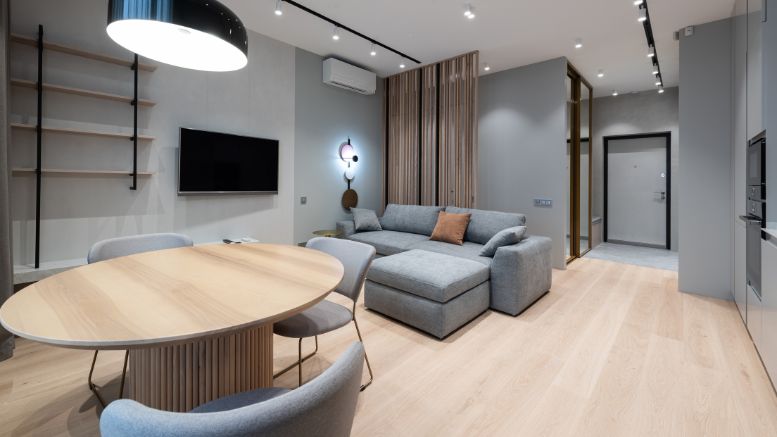68 thousand companies – equal to 14.9 percent of total manufacturing – 298 thousand employees – equal to 8 percent of the total – a production turnover of 56.5 billion euros – equal to 4.6 percent total – and an increase of 12.6 percent compared to 2021. These are the numbers with which the Italian wood-furniture supply chain presents itself at the most important event of the year, the Milan Furniture Fair scheduled from April 18 to 23 in the halls of Rho Fiera.
This is said by the balances elaborated by the FederlegnoArredo Study Center, which confirm how, despite the fact that 2022 was also a year of uncertainty and geopolitical instability, wood-furniture companies have been able to face these months with determination, managing to maintain, if not even increase, employment levels, looking at 2023 as a year of stabilization that physiologically follows a two-year period that, for better or worse, was certainly exceptional.
Overall, the production turnover of the wood-furniture supply chain grew by 12.6 percent, thus rising from 43.2 in 2019 to 50.2 billion in 2021 to the current 56.5 with an extremely bright start in the first quarter that has been gradually tapering off by the end of the year, both in the domestic and foreign markets. The plus 12.6 percent is a synthesis of plus 12.2 percent in Italy sales (35.6 billion euros) and plus 13.3 percent in exports (21 billion euros), which account for 37 percent of total sales.
Specifically, sales in the Wood Macrosystem (23.5 billion euros) registered an increase of plus 14.3 percent, the Furniture Macrosystem (about 29 billion euros) registered plus 11 percent, and the Wood Trade (4 billion euros) registered plus 15 percent.
In a year in which the positive sign undoubtedly predominates, it is worth pausing to understand whether and how much this really indicates actual growth in the sector or whether it is not rather the algebraic result between industrial production and turnover, in which the costs of raw materials and energy have been a decisive element in determining the profitability of companies.
Indeed, comparing the industrial production index, which measures the volume of production, with that of industry turnover, a gap of more than 11 points clearly emerges for the furniture industry (turnover 12.1 percent -production 0.8 percent) and as much as 17 for wood, on which the impact of raw material costs is more significant and immediate (turnover 20.3 percent – production 3.7 percent). The increases in wood, which began as early as February 2021, have been sustained throughout 2022, reaching an average plus 14.5 percent in 2022.
Although with a smaller impact, furniture also experienced the price surge that reached plus 10.3 percent, experiencing an acceleration in the spring of 2022 and reaching the highest levels last fall.
EXPORTS
The supply chain’s exports (21 billion) with a growth of 13.3 percent were driven mainly by the UnitedStates, (plus 25.7 percent) which became the second largest destination ahead of Germany (plus 9.7 percent) and after France (plus 9.5 percent), which remains the first outlet market. The export result is the result of a plus 12.6 percent recorded by the Furniture Macrosystem (15 billion euros) and a plus 14.9 percent by the Wood Macrosystem (5.5 billion euros).
The growth in exports should be read within a framework in which the war has changed the scenarios: in 2022 exports to Russia were worth 334 million euros with a decrease over 2021 of 27.3 percent or 126 million euros, thus knocking Russia out of the top ten in supply chain exports.
Suffice it to say that in 2013 Russia was the fourth destination of our exports with about 1 billion euros, halved already in 2017, and gradually the phenomenon has been confirmed. In contrast, exports to the United States, which again in 2013 was the fifth destination, grew by 488 million over the previous year (plus 25.7 percent over 2021) to the current 2.3 billion euros.
France is the top destination for Italian exports from the supply chain with about 3.3 billion euros in 2022 and a growth of 9.5 percent. Germany is the third largest market, growing 9.7 percent over 2021 to reach 2.3 billion euros. China is confirmed as the seventh destination characterized in the past years by particular dynamism with much greater percentage changes in growth than the other countries, while in 2022, due to the management of the pandemic decided by the Chinese government and the consequent closures, it is among the top 10 markets the one with the lowest growth (plus 1.1 percent).
In the domestic market, which in 2022 will touch 35.6 billion euros, growth reached plus 12.2 percent, thanks in particular to the positive contribution of the Wood Macrosystem, driven by the building finishes sectors (doors, windows, wood flooring) and products for the home, which, more than the others, directly benefited from the incentives linked to Superbonus, furniture bonus and building bonus.
In 2022, it should be mentioned how imports also grew, especially of timber, for example from Austria (plus 35.2 percent) the first supply market for our sector, followed by Germany and China.














